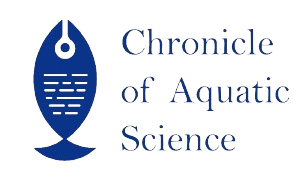| File | Action |
|---|---|
| CoAS_V1IS3_01 | Download |
- 919088951040 call us
- chronicleofaquaticscience@gmail.com Mail us
CoAS_V1IS3_01
Review Article
Modern Fish Preservation Methods Enhancing the Quality and Safety of Fish and Fishery Products
Vignaesh Dhanabalan, Manivannan Marimuthu, Sahna Don, Sarojini A., Vinoth Kumar L. and Kasturi Chattopadhyay*
Abstract
Fish and Fisheries products are highly perishable that requires appropriate preservation techniques to maintain their quality and safety throughout the storage period. Recently, different preservation methods were adopted to extend shelf-life and retain the organoleptic properties. The present review intends to explain the principal mechanisms of some of these modern methods employed to preserve quality and safety of fish and fishery products; specifically, High Hydrostatic Pressure Processing (HPP), Pulse Electric Field (PEF), Plasma technology and Microbial preservation. The advantages and disadvantages of each method are discussed in this review so as to provide a global outline about these techniques. In general, all the preservation methods shown a good efficiency to control microbial growth in fish and fisheries products and maintain their sensory, organoleptic and nutritional properties. Conversely, future studies are required to develop a single or combined hurdle-like method to meet both the production requirements and consumers’ need.
Keywords
High Hydrostatic Pressure Processing, Pulse electric field, plasma technology, microbial preservation
References
Angersbach, A., Heinz, V., & Knorr, D. (2000). Effects of pulsed electric fields on cell membranes in real food systems. Innov. Food Sci. Emerg. Technol., 1(2), 135- 149.
Board, N.P.C.S., 2012. Modern Technology on Food Preservation. Asia Pacific Business Press Inc..
Borda, D., Nicolau, A. I., & Raspor, P. (Eds.). (2017). Trends in fish processing technologies. CRC Press.FAO, O., 2021. Meat. OECD-FAO Agricultural Outlook 2021–2030, pp.163-177.
Boziaris, I. S. (Ed.). (2014). Seafood processing: Technology, quality and safety. John Wiley & Sons. FAO. 2022. The State of World Fisheries and Aquaculture 2022. Towards Blue Transformation. Rome, FAO Ghaly, A.E., Dave, D., Budge, S. and Brooks, M.S., 2010. Fish spoilage mechanisms and preservation techniques. American journal of applied sciences, 7(7), p.859.
Mahmud, A., Abraha, B., Samuel, M., Mohammedidris, H., Abraham, W. and Mahmud, E., 2018. Fish preservation: A multi-dimensional approach. MOJ Food Process. Technol, 6, pp.303-310.
Mandal, R.; Mohammadi, X.; Wiktor, A.; Singh, A.; Singh, A.P. (2020). Applications of Pulsed Light Decontamination Technology in Food Processing: An Overview. Appl. Sci., 10, 3606.
Shaw, A., Shama, G., & Iza, F. (2015). Emerging applications of low temperature gas plasmas in the food industry. Biointerphases, 10(2)
Speranza, B., Racioppo, A., Bevilacqua, A., Buzzo, V., Marigliano, P., Mocerino, E., Scognamiglio, R., Corbo, M.R., Scognamiglio, G. and Sinigaglia, M., 2021. Innovative preservation methods improving the quality and safety of fish products: Beneficial effects and limits. Foods, 10(11), p.2854.
Tsironi, T., Houhoula, D. and Taoukis, P., 2020. Hurdle technology for fish preservation. Aquaculture and Fisheries, 5(2), pp.65- 71.
- Published online
- 31st August, 2023
How to Cite the Article
Dhanabalan, V., Marimuthu, M., Don, S., Sarojini, A., Vinoth, K.L., and Chattopadhyay, K. (2023). Modern Fish Preservation Methods Enhancing the Quality and Safety of Fish and Fishery Products. Chronicle of Aquatic Science 1(3):1-8
Copyright
This is an open-access article distributed under the terms of the Creative Commons Attribution License (CC BY). The use, distribution or reproduction in other forums is permitted, provided the original author(s) and the copyright owner(s) are credited and that the original publication in this journal is cited, in accordance with accepted academic practice. No use, distribution or reproduction is permitted which does not comply with these terms.

CoAS_V1IS3_01


